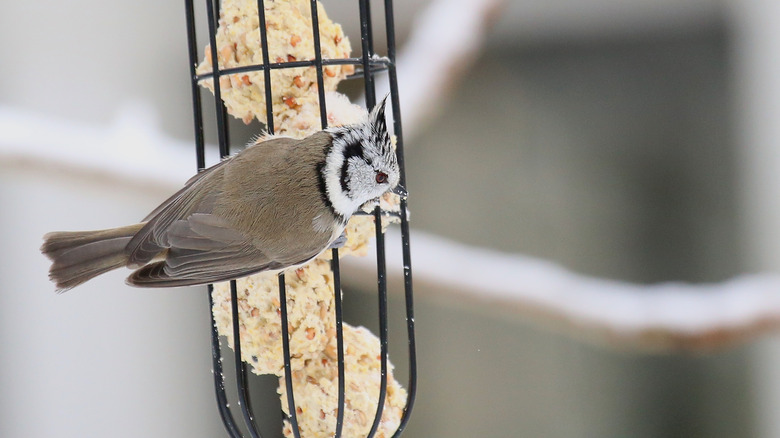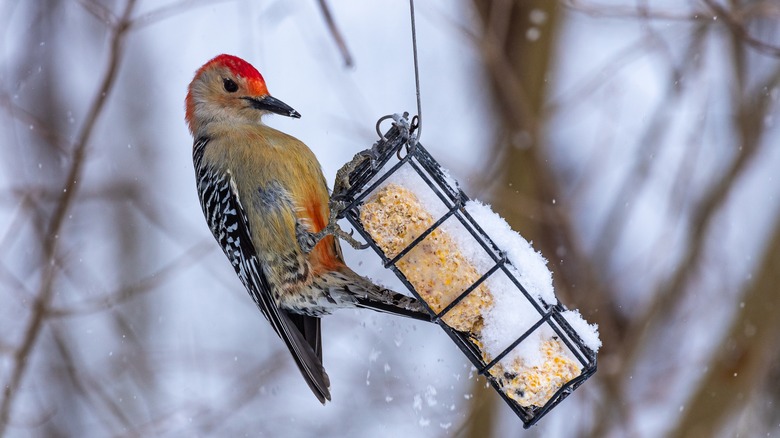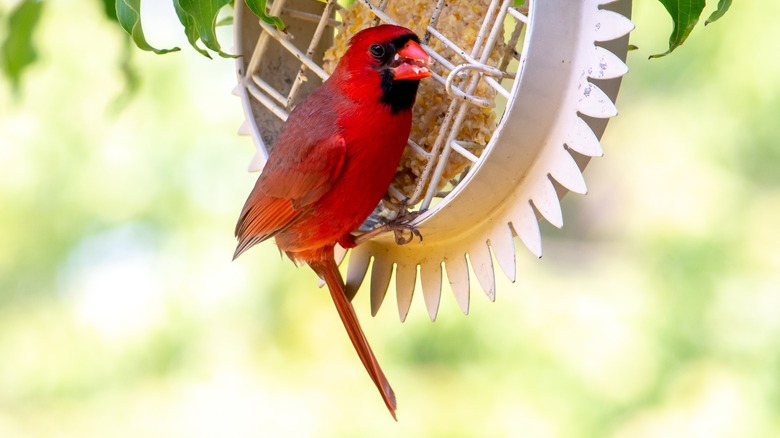Will Suet Keep Birds At My Feeders Longer?
Not familiar with suet? It's a type of fat-laden bird food that's chock full of protein. Birds not only enjoy eating it, but it provides the caloric intake they need to thrive for several months during the year. For bird watchers, it can also be a way to entice new types of birds to visit a yard and get the avian friends they enjoy watching to stick around for a while. Ken Elkins, community conservation manager for Audubon Connecticut shares "Suet is one of those feeding experiences where it keeps them there, in view, a little longer," per Birds & Blooms.
Some of the birds that enjoy eating suet include nuthatches, woodpeckers, wrens, cardinals, and chickadees. If suet sounds like something you'd like to add to your backyard bird-feeding repertoire, you can DIY suet feed yourself, or you can buy it premade in either blocks or balls. There are also cage-type feeders you can purchase made to hold suet so that it's easily accessible to all your favorite birds.
The best time to add suet to backyard feeders
Whether you decide to make your own or buy ready-made suet, you may be wondering when to fill your feeder with it. "At different times of the year, birds need different nutrients," remarks Ken Elkins (via Birds & Blooms). "Suet can start to be valuable to birds in the fall, not just the winter." Since it is typically made using ingredients like bird seed, dried fruit, peanuts, and oats — and some birders add dried insects to make it extra enticing — it provides the ample fat and protein birds require to flourish during cooler months of the year.
Another reason suet is best in fall and winter is the propensity for it to melt during hot weather. With rendered animal fat being used as the base ingredient in many suet recipes, this makes sense. Even vegan versions call for coconut oil and peanut butter, which also get goopy when it's hot outdoors. The resulting mess can be harmful to the waterproofing in a bird's feathers and clog the pores of the eggs they're trying to hatch, but heat can also cause suet to become dangerously rancid.
When to take your suet feeders down
In the winter months, birds will generally eat up the blocks or balls of suet before they have a chance to spoil. You can replace them as many times as needed to keep attracting birds to your yard. Adding more than one suet feeder to your yard is also a great way to draw more birds for viewing.
As the weather starts to warm, though, suet blocks and balls can become dangerous to the birds if left out too long. Rancid suet is a source of fungus and bacterial growth that is detrimental to birds' health, so that's a definite concern. Be sure to keep an eye on the weather as springtime approaches and take your suet feeders down when the weather starts getting above 70 degrees Fahrenheit to be safe. In the meantime, you can enjoy viewing a variety of birds as they linger at your suet feeders during the fall and all throughout the winter.


